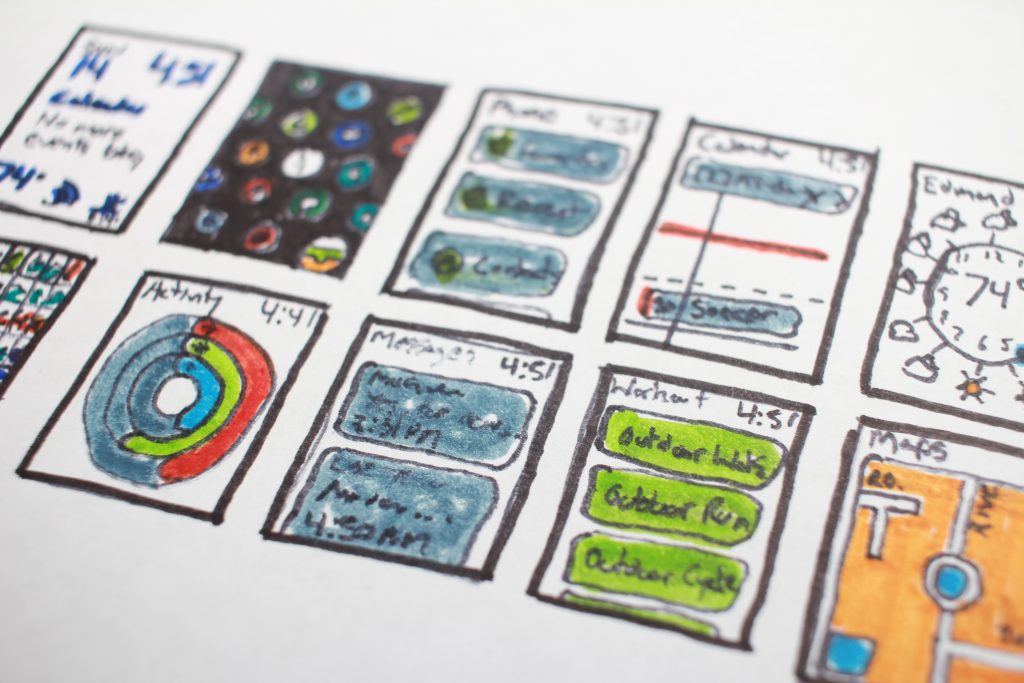It is a new year and some of us may need some fresh ideas to add energy, motivation and tasks to our classes. One possible means of accomplishing this is to include relevant project work into the syllabus.
The tools listed below are just that – tools. As the instructor, you can guide the learners to themes as focal points for project content. These free, digital tools include how-to guides, an online example, and orientation blogs for the instructors to read and consider before embarking on a digital venture with their learners.
The tools
- CANVA to create infographics
- WinkSite to create a mobile web page
- Google Tour Creator to create a virtual tour
- QuestGarden to create a WebQuest
Impetus for student-generated projects
Over the past few years, I have been trying to up my game while integrating technology with language learners. I use the SAMR Model as a framework to accomplish this. Created by Dr. Ruben Puentedura, SAMR (or Substitution, Augmentation, Modification, Redefinition) categorizes four different degrees of classroom technology integration. In the early days of using computer assisted language learning, I confess that most of the activities were simple substitution. The tasks could have been accomplished without technology. In today’s online environment, I try to integrate modification activities.
Projects with online technologies modify learning because the learners are challenged with researching online, collaborating with classmates online, and creating original projects.
Why digital projects?
Since most of us are teaching online or in blended modes, free, online tools are within our normal scope. As we have already had the initial experience of teaching online, many of us are ready for the next step to add diversity to our teaching toolbox. Additional reasons to adopt free online tools to promote student-generated projects are:
- to change the daily routine,
- to encourage students with new digital skills,
- to generate projects with contemporary media,
- to convey information transfer into alternate digital formats,
- to inspire creativity and design through practice with layout, colour, design elements, and project work, and
- to provide an opportunity for student presentations.
Instructional Steps
Each of the projects below follow simple instructional patterns. These can be used as progression checklists. When approaching these projects, it is a good idea to try them yourself before introducing them to the students. They will add flair and perform positive hacks that you will not have anticipated. It is best to guide them throughout the process to ensure that they are ready to present their project at the designated time.
Infographic
1. Teach content
2. Show exemplar infographic
3. Student complete the Step-by-step “how to” guide
4. Project brief (task) including project rubric
5. Project process (pairs/groups)
- select template
- add text
- add images
- adjust layout
6. Presentation
7. Feedback
Mobile Website
1. Teach content
2. Show exemplar site
3. Student complete the step-by-step “how to” guide and video if required
4. Project brief (task) including project rubric
5. Groups/pairs select topic
6. Project proposal
7. Draft project plan
8. Final project plan
9. Storyboard
10. Complete content document
11. Final website project
12. Group presentations
13. Feedback
Virtual Tour
1. Teach content
2. Show exemplar site
3. Students complete the step-by-step “how to” guide
4. Project brief (task) including project rubric
5. Project process (pairs/groups)
6. Student presentations
7. Feedback
WebQuest
1. Teach content
2. Show exemplar site
3. Students complete the online “how to” guides and videos if necessary
4. Project brief (task) including project rubric
5. Project process (pairs/groups)
6. Student presentations
7. Feedback
Alternate Technologies for Student Projects
The technologies presented here are not your only options. For example, the Google Tour Creator can be substituted by H5Ps new Virtual Tour (360) or CANVA may be substituted with SNAPPA. Ask around, explore, and see what your options are before committing to a tool with your students.
Final thoughts
The ideas included in this post were inspired, planned, tried, updated, and tried again over the past few years with the intention of diversifying and improving blended and online courses. Each of the technologies have been individually showcased in previous blog posts, so if they may seem familiar, they are! I hope that some of you can adapt these ideas into your online instruction in 2021.
Relevant Resources
Infographics
How To: http://bit.ly/2WWCDvh
Example: https://bit.ly/31fR6F5
Blog post: http://bit.ly/34V0pMs
Mobile website
How To: http://bit.ly/382uuvt
How To video: https://bit.ly/3aY9yYE
Example: http://bit.ly/3o45Dx0
Blog post: http://bit.ly/2X1yXIF
Virtual Tour
How To: http://bit.ly/2Mp7Ghd
Example: http://bit.ly/3o8l6w0
Blog post: http://bit.ly/3pDthkq
Alternate technology (Blog post): http://bit.ly/3oa3kss
WebQuests
How to: http://bit.ly/38MUqdT
How To videos: https://youtu.be/o4rel5qOPvU,
https://youtu.be/Cyht-ehlAWY, https://youtu.be/VrljNfEnSk0
Example: http://bit.ly/2KTgX0D
Blog post: http://bit.ly/2LchWZn
ATESL session slideshow – Student generated projects with free online tools: http://bit.ly/3huHLQN
SAMR by Wikiversity: http://bit.ly/34Z0wa1


I haven’t used it a lot, but Glogster is a fun way to collect and present material. It can include text, video, audio, links, uploaded content.
I am interested as to how many others have tried this online collage.
Yes, Glogster has been around and is a good example of a tool that can be used to inspire a creative project under the facilitation of an instructor. I have not used Glogster with students online. I did use it in blended mode a few years ago. the students loved it. Another one that can be used without too much fuss is Padlet. as well.
These are all great online resources for creating interesting and collaborating projects together in the classroom. Thanks so much for the great suggestions!
Sarah, you are welcome. If you try any of these, I’d like to hear about the experience.
Can creativity be developed in our nursing students? The authors describe their experience in using creativity projects in a nursing course and the impact the experience had on students and patient care.